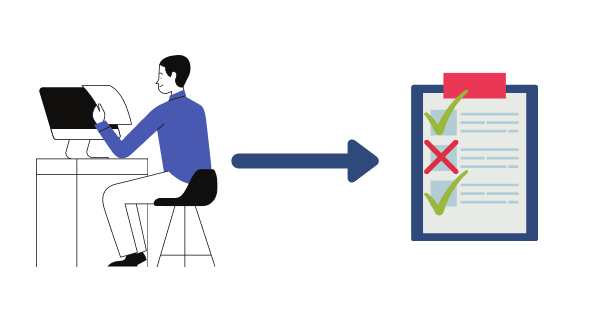How to do eCommerce competitor analysis
General, Price-monitoring, eCommerce ·It’s common for eCommerce businesses to dedicate time and resources to investigate new markets, but once they manage to establish their position, competitor analysis becomes less important. That’s a huge mistake! If you are improving your business, why wouldn’t competitors do the same? And if you don’t perform a regular competitor analysis these changes might pass by you.
Truth be told, many businesses are not careless, but simply do not know how to implement such analysis.
That’s why we’re here! We’ll explain to you what are just the right steps in conducting a successful competitor analysis.
What is competitor analysis and why is it important?
Competitor analysis is an in-depth research of your competitors - their market presence, pricing strategy, their customers, marketing, and so on. Knowing what you’re competitors are up to is the only way to have an upper hand.
Of course, not every aspect needs to be analysed, especially if you have many competitors. If you want to improve your pricing strategy, you’ll focus on that. If you want to improve your social media presence, you can take a look at what your competitors are doing in that aspect.
Moreover, competitor analysis is a good way to:
- Have a clearer idea of where do you stand on the market;
- Get a better understanding of your competitors and their actions;
- Understand their strengths and weaknesses;
- Implement those findings into your business strategy
What usually drives businesses away from performing this research is the fact that they see it as though it is time consuming.That’s not far from the truth but only in cases where the initial plan was not prepared well enough.
Let’s deconstruct competitor analysis and make it more understandable.
Define the competitors
This seems like a logical place to start with, right?
Don’t be afraid to spend lots of time on this first step. In order to find more information, you first need to know where to look for them.

If your industry is not crowded, it is most probably that you can come up with a few names on the top of your head. But, if you are a grain of sand in the desert, things might get a bit more complicated.
Start by asking yourself some of these questions:
-
Which competitors appear in the similar search results?
-
Are my clients mentioning some other competitors as well? Were they using their services in the past?
-
Who is addressing the same issues as I am? (in terms of being able to solve the same or similar problem)
-
Who am I usually compared with? (in listing categories, blog posts, reports, etc.)
Once you have those answers, you can divide your competitors into certain categories, such as: primary and secondary ones, depending on the level of similarity. If, for example, a competitor is a part of the same industry and offers a very similar product, you can categorize him as a primary one. However, if you are a part of the same industry, but their product differs from yours, they can be categorized as secondary competitors.
Also, pay attention to their size, market share, pricing, and audience and product overlaps. That’s all very insightful info!
Narrow the list
Not all the competitors are equally important. Try to narrow down your list to, let’s say, top 5. In that way you’ll be able to dedicate enough time to each competitor, and conduct a depth competitor analysis.
Once you know who they are, it’s time to dive into the investigation process

Here you want to check different aspects:
- What price plans do they offer?
- What are the product features that they can offer? Are they similar to your offer or not?
- How their website looks like, and what are they communicating there?
- Who is their audience? How many clients/customers do they have?
Some of these answers can be obtained manually, but price plans, and especially price changes are very difficult to follow. That’s why there are so many price monitoring tools on the market.
You can put all that information in one table, so that you can see everything in one place. That’s also convenient when new competitors appear since you can simply add them to the list.
Identify competitors strengths and weaknesses
This step can be extremely beneficial!
It will point out concrete things in which you are better than your competitors, but it will also show you where there is room for improvement. For example, you can come to the conclusion that your price plans are in more alignment with your customers in comparison to the competitors price plans.

Some other important points can also be the following:
- As a consumer, would I like their website/online store? If yes, why? If not, what’s wrong?
- What’s the weakest part of their website?
- What’s the strongest part of their website?
- How would I rate their social presence in general?
- Are they using some strategy that I’ve been missing?
As you can see, in this step you will need to dedicate some time into analyzing the competitors’ SEO. That means that your competitor analysis should include information about the keywords that your competitors are ranking for, what kind of content are they producing and how it is ranked, do other websites link to them, etc.
You implemented the changes - what’s the reaction?
Once you’ve managed to gather all the information from the competitor analysis, it’s time to put those findings into action.
As you already know, every action has a reaction, so you need to keep an eye on how the competition will react to your strategy changes.
If you make a price change, what will happen?
How will they react if you run a promotion?
If you start bidding the same (or higher) for the same keywords, what will be their next move?
Hence, you must be on a constant alert. The job is not done after the competitor analysis has been implemented.
Summing it up
Armed with this information, you are ready to dive into the competitor analysis process. When you know the steps, it doesn’t seem so complicated anymore, right? Yes, at first this will take a lot of time, but once it’s finished, it will become some sort of your private library that you can update at any time! :) The effort will pay off once you see the results and take your business to a next level.
In case you want to leave part of this (especially the pricing part) to someone else, feel free to register for a 30 days free trial period with Price2Spy.
We hope you’ll find this useful!
Share your thoughts on competitor analysis with us! We would love to hear from you!
